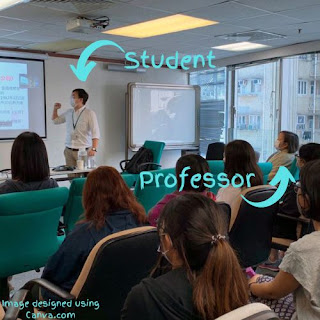What are Students Learning? Look at What They're Doing
Consider the scenario: students are watching automotive mechanics drain transmission fluid from the transmission pan. What are they learning?
We could not say they are learning how to flush transmission fluid. We would have to conclude that the students are learning how to sit and watch while another person performs skilled manual labor. This is very different from learning how to perform that skilled labor themselves. To learn how to flush transmission fluid, students would have to get their hands (and probably elbows) dirty.
If students are using flashcards to memorize medical terminology, then they are learning how to memorize lists and definitions. This is different from developing facility and familiarity with a larger or specialized vocabulary, which would require using the new words in real and novel situations.
This method for analyzing what students are learning comes from Canadian media scholar Marshall McLuhan (1964/2005). McCluhan argued that the medium, which is the vehicle used to transmit information—whether it be television, radio, newspaper, or magazine—is the message. This means that the information contained in a magazine article is not as important as the vehicle that delivers the information, which in this example is the magazine. How do you and I engage magazines? Well, magazines have glossy pages and high-resolution photos. In magazines, visual presentation is more important than the printed word, and therefore force us as readers to flip pages mindlessly until we are gripped by a provocative photo or phrase, then we start reading. Articles are designed around the idea that someone might absently notice the title while waiting for an eye exam or tooth extraction.
Or consider watching television. Using McLuhan’s approach, we would say that an action-packed television program is no different from a video-recorded lecture about teaching and learning, because both ask the consumer to sit and stare absently at the glowing screen. What an activity asks of a person is more important than the information the activity uses. The how is more important than the what.
Late American scholar and teacher Neil Postman applied McLuhan’s analytic method to education. Postman explained that students learn by doing. Therefore, the best way to understand what they are learning is to look at what they are doing. He and Howard Weingartner explain,
[Educator and pedagogue John] Dewey stressed that the role an individual is assigned in an environment—what they are permitted to do—is what the individual learns. In other words, the medium itself, i.e., the environment, is the message. “Message” here means the perceptions you are allowed to build, the attitudes you are enticed to assume, the sensitivities you are encouraged to develop—almost all of the things you learn to see and feel and value. You learn them because your environment is organized in such a way that it permits or encourages or insists that you learn them. (1969, p. 1)
Students learn test-taking strategies in elementary through high school because achievement on standardized is valued above all else. It is believed that standardized tests have helped students learn whatever information the tests cover. But what the students are learning is exhibited by what they are doing, which is practicing how to take standardized tests. There is an entire consumer market devoted to test-taking skills. These skills—which include guessing when your are unsure about an answer, but only when you can discard at least one possible answer—are learned independently from any content or topics the tests cover. These strategies are helpful whether a student is preparing for a test in environmental biology, art appreciation, or parenting. Actual test content is irrelevant.
In his book about John Dewey’s Imaginative Teaching, Deron Boyles explain what education has taught students. Speaking directly to students, he writes:
[Y]ou have learned how to play the game of school. This game is largely one of following instructions, aligning to rubrics, and basically gaming the system. But success in these areas means that you’re not very critical or imaginative or willing to take risks. You are smart enough to figure out how to get good grades without having to put a lot of energy into your learning. […] Too many of you, in other words, have figure out how to use the least amoung of effort to get the maximum amount of points. School is about grades. It’s about credits. (2020, p. 2)
By analyzing the environment of college learning, we can judge what students are permitted to do, and, by extension, what they are permitted to learn. For example, when I wander the halls of my state university (which is virtually identical to any public school, community college, or university that I have ever attended, visited, or taught in) I find classrooms of students seated quietly in rows facing teacher or projection screen or both. The comparison to a movie theater is obvious, but it is less threatening to explain that college students are learning how to read poetry while moviegoers are being entertained.
If students in poetry class are sitting patiently as their professor goes on and on about imagery and irony, then those students are learning how to sit and politely listen. Professors will explain that students are learning about poetry. Once again, we need only look to see that students are sitting and politely listening to a lecture on, say, Allen Ginsberg, which permits them to perform the same limited repertoire of behaviors as does the theater screening of the film Howl, an Allen Ginsberg biopic. In both, participants must sit still and avoid disrupting their neighbors. They are learning how to be passive consumers of information, entertaining or otherwise.


Comments
Post a Comment